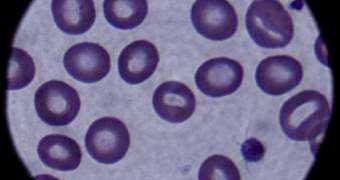In a groundbreaking new finding, researchers have discovered the “safehouse” that HIV cells use to hide when the patient they infect undergoes therapy. These viral cells are notoriously hard to destroy, and researchers knew that they had to be laying dormant somewhere, just waiting for the opportune moment to develop again. In the recent study, they learned that progenitor cells of immune system cells are the most important “reservoir” for HIV to hide in while dangerous chemicals run through the body, Nature News reports.
The investigation revealed that bone marrow-based hematopoietic progenitor cells (HPC) are the main target for HIV, when the viral agent is subjected to the harmful actions of highly active anti-retroviral therapy (HAART). The immune system of their hosts also attacks them, and when the dangers become too great, the virus lies dormant in these HPC, until conditions are ripe for it to awaken, and wreak havoc in the body once more. In additional discoveries, it was also found that HIV targets these progenitor cells because they have yet to develop into white blood cells.
This category of immune system cells is very important, because some of its members – most notably the CD4+ T lymphocytes – play a critical role in mounting an immune response to invading bacteria, microbes, viruses, or other pathogens that could make their way into the body. In many cases, when HIV-infected people stop taking HAART drugs, they experience a relapse, with the virus grabbing a hold on them once more. “There are so many instances where patients stopped taking drugs and the virus rebounded. There is no way to get people off the drugs,” says University of Michigan in Ann Arbor cellular biologist Kathleen Collins.
Details of the investigation appear in the latest issue of the respected scientific journal Nature Medicine. Collins was the lead author of the paper. She says that her team found the HIV genome in a host of patients who were undergoing HAART, but had not had distinguishable signs of HIV infection for the past six months. When the researchers forced the HPC to differentiate into white blood cells, they found the signature of the virus. The pathogen had become encoded in the genetic material of the HPC, but it wasn't doing much damage, because it couldn't replicate, infect more cells, and create more copies of itself.

 14 DAY TRIAL //
14 DAY TRIAL //